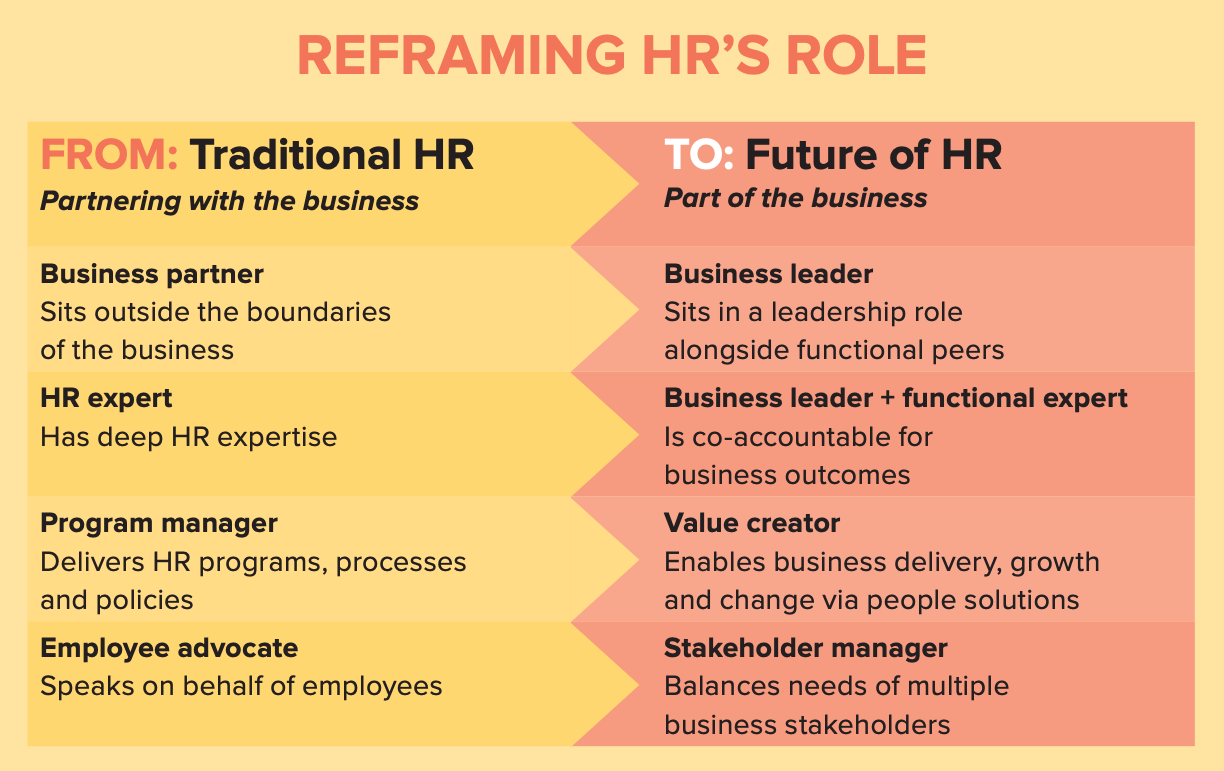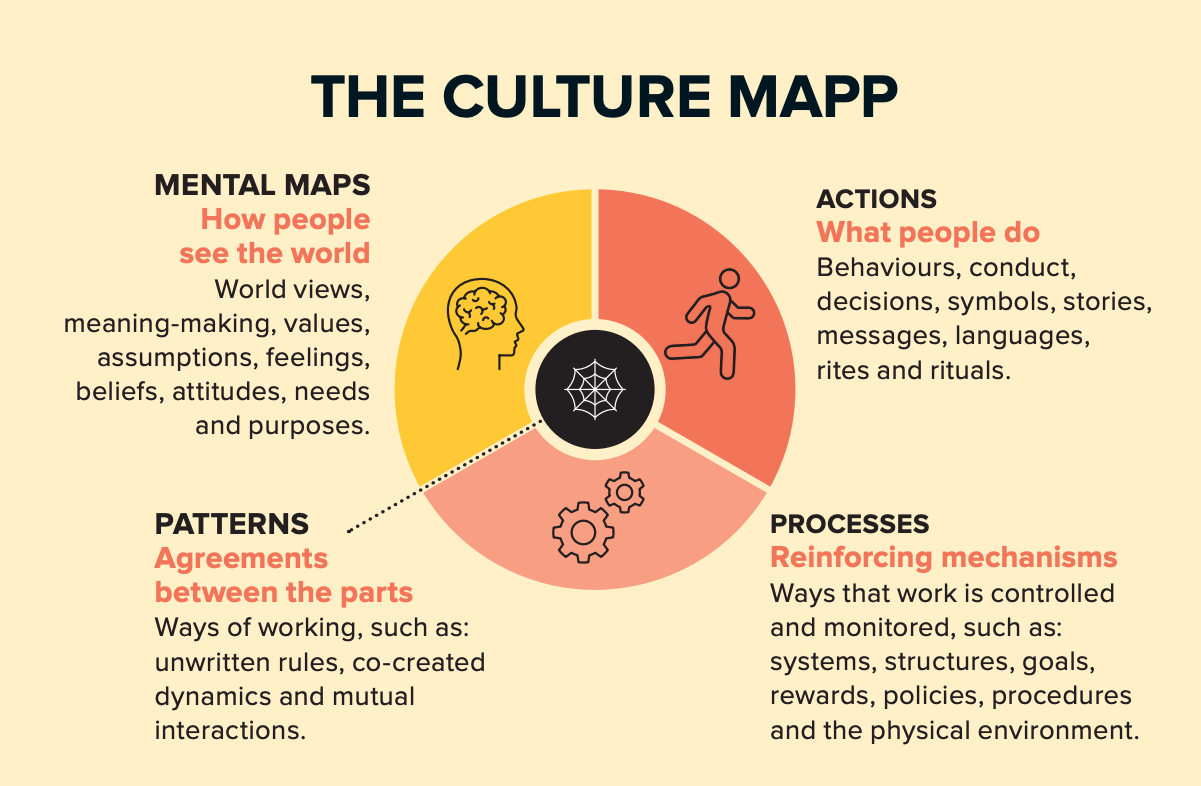Renowned culture transformer and upcoming AHRI Convention speaker Siobhan McHale shares her key lessons to help HR practitioners have maximum impact during culture transformation.
“Good luck with the culture change.”

The Chief Financial Officer of an infrastructure company said this to Siobhan McHale when she had been with the company for less than a week and was given the task of ‘fixing’ its broken culture.
It was the sentence that made McHale realise that many organisations have a flawed understanding of what it takes to bring about cultural change.
“Project managers weren’t managing their budgets, shareholders were furious and the organisation urgently needed to develop a high-performing culture to survive in a more competitive world,” says McHale, who is now the Executive General Manager of People, Culture and Change at Dulux.
While the leaders and managers of the company “sat on the sidelines”, the HR team who had preceded her desperately tried to solve the company’s culture issues. But without widespread support, it was a classic high-effort, low-return exercise that left HR going around in circles.
The CFO’s words rang in McHale’s head.
It was clear that this organisation (and many others) saw culture as something to handball to HR. While the executives knew it was important, they struggled to see how they all could play a part in its success.
“I knew my efforts would also fail if the business placed total responsibility for change on HR’s shoulders,” says McHale.
To help the business achieve its desired results, she had to roll up her sleeves and do the hard work of helping people truly understand what culture means and reframe their role within it.
The first hurdle McHale had to overcome at the infrastructure company was repositioning HR’s role in the culture journey, she says. “Every part of the organisational ecosystem needs to take up a different role when it comes to culture change, and HR needs to examine its part in that.”
McHale says some HR practitioners default to the role of ‘order taker’, but in a culture transformation project, HR’s overarching role might instead be as ‘lead enabler’.
“That lead enabler role may come in the form of being a diagnostician at the beginning, revealing the patterns in the culture. At another point, it might mean being a designer, building the interventions that allow the system to start or shift. Or it may come in the form of being an interventionist, standing side by side with leaders and making change happen.”
“The famous quote attributed to Peter Drucker is: ‘Culture eats strategy for breakfast.’ I would contend that culture and strategy are not competitors, but rather, culture enables strategy.” – Siobhan McHale, Executive General Manager of People, Culture and Change, Dulux
Reframing HR’s role in culture transformation
To effectively engage in this kind of role shifting, HR professionals first need to have accumulated a significant level of trust, influence and social capital with key decision-makers in the business. Part of that comes from how they position the HR function not only in a culture transformation, but in the entire business operation.
“Sometimes HR is positioned as the ‘business partner,’” says McHale. “This positioning may have served us well in the past and allowed HR to get a seat at the table, but the role of ‘business partner’ places HR on the sidelines, rather than as a business leader with specific people, culture and change expertise.
“As a business leader, you behave in a very different way than you would if you were a partner. You’re not an external consultant; you’re sitting within the business with your functional colleagues, leveraging your expertise to help the business adapt and grow.”

Reframing culture itself
Once HR’s role in a culture transformation is clear, the next step is to ensure everyone involved is 100 per cent clear on what they are trying to achieve, because, although culture is one of the most talked-about aspects of work, it’s also one of the least understood, she says.
“For some time now, culture has been positioned in many parts purely as employee engagement. Of course, engagement is a very important aspect of culture, but HR professionals need to have commercial conversations around culture.
“Culture is an enabler of strategy. It impacts every aspect of your business, from how you develop ideas to how you make your product or sell your services.”
There’s also a variety of cultures you can build in your organisation.
“Depending on your strategy, you may need a culture that’s customer-focused, quality-driven, high-performing, safety-conscious, agile, collaborative, growth-oriented, entrepreneurial – the list goes on.”
Culture is more than skin-deep, and in order to comprehend it in its entirety, you need to understand it in its parts. To help HR and leaders do this, McHale created the Culture MAPP, which breaks culture down into four key elements: mental maps, actions, patterns and processes.

“Mental maps are like the GPS in your car in that they help you navigate your way in the world. They contain information about the roles you step into throughout the day.
“The mental maps people hold may not be visible to anyone else, but they strongly influence how people think and feel about their work. During culture change, help people redraw the mental maps that shape their role, so they can navigate the change.”
The actions section speaks to employees’ behaviours and conduct.
“These are the important behaviours, decisions and stories that are told within the organisation,” says McHale.
You also need tangible elements to help a culture come to life. That’s where processes come in.
“These are your reinforcing mechanisms. They might be your training courses or your remuneration or performance management systems. They reinforce or strengthen the culture that’s in place.”
Patterns, the final element of the MAPP, is when culture becomes more systemic and collectively held.
“People can come and go from your business, but the patterns tend to remain.”
To demonstrate a seemingly innocent yet impactful pattern in action, she refers to the infrastructure company she used to work for.
“The CEO was fed up because the Head of Marketing promised to organise a billboard advertisement for months and still hadn’t done it. I asked, ‘Have you talked to him about it?’ It turned out he’d talked to everyone except the Head of Marketing. The pattern in that system was avoiding tough conversations because people would rather be liked.
“The CEO was co-creating the pattern by stepping into the role of ‘nice guy’, and marketing were the ‘non-delivers’. As soon as the CEO saw his role in the pattern, he had the hard conversation, and, by the end of the week, the billboard was installed.”
Culture transformation in action
Once the relevant reframing work has been done, it’s time to jump into the doing.
The culture change program McHale is most known for is the seven-year radical transformation she co-led at the Australia and New Zealand Banking Group (ANZ) in the early 2000s, which saw it go from the worst-performing financial institution in Australia to the number-one bank globally on the Dow Jones Sustainability Index.
“When I came aboard, ANZ’s culture was in disarray. Its customers were dissatisfied, employees dreaded coming to work, and sagging revenues and profits had demoralised leaders. While ANZ’s executives knew they needed to instigate a turnaround, everything they tried seemed to make matters worse.”
McHale and her team worked with business leaders to identify and shift the hidden patterns that were blocking progress.
“Head office had stepped into the role of order giver – they were handing down orders to the branches and telling them what to do. The branch staff had stepped into the role of order taker. They were in a victim role and were feeling demoralised.
“This pattern of being told what to do was essentially leaking the organisational energy.”
The development of a new operating model called ‘Restoring Customer Faith’ reframed people’s roles, putting the head office into the role of ‘supporters’ and the branches into the role of ‘business leaders’.
“The role of ‘business partner’ places HR on the sidelines, rather than as a business leader with specific people, culture and change expertise.” – Siobhan McHale, Executive General Manager of People, Culture and Change, Dulux
It was such a massive undertaking that the executives decided to start with a pilot program aimed at the bank branches in the Dandenong region in Victoria.
“Beginning with a pilot is almost essential when working on complex adaptive change. I often call these ‘lighthouse projects’ because when they work, they shine a light for others to follow.”
A local CEO was appointed in the region, rather than having leadership directives stem from HQ.
“We said, ‘All the decisions in relation to how you serve your customers, manage your people and manage the branches within this area are yours.’ Then we stepped back and allowed the reframe to take hold. Over a four-month period we saw customer satisfaction increase by 30 per cent, we gained 30 per cent more customers, we saw a 40 per cent drop in defections and we saw a spike in employee engagement.
“Once we saw the impact on that region, we rolled out the initiative across ANZ.”
Within seven years of change at ANZ, the executives were happy to report that profits had more than doubled and the share price had nearly tripled, she says.
“ANZ was winning awards for leadership, employee engagement and customer service. The firm had also become a magnet for talent, receiving more than 10,000 applications annually for its 250 graduate positions.”
It’s projects like this that prove culture has little to do with pizza parties, ping-pong tables and game rooms. Viewing it this way is the reason so many HR leaders lament the fact that their culture strategies often don’t get the executive support required, or fall flat when rolled out to a cohort that’s less than excited to embrace them.
Culture always needs to be viewed through a commercial lens, which is why McHale’s ANZ project was a wild success, going on to form the basis of her best-selling book, The Insider’s Guide to Culture Change, and be used as a Harvard Business School case study.
Not only did McHale and her team remove the kinks from a poorly performing culture, they also delivered tremendous results.
In other words, culture transformation is not just about creating a new system or process to correct the issues, but leaving the culture better than you found it.
A longer version of this article was first published in the June edition of HRM Magazine.
Siobhan McHale will be speaking on culture transformation and group intelligence at AHRI’s National Convention and Exhibition in August. Sign up today to hear from Siobhan and other experts, including Seth Godin, Dr Pippa Grange and more.

